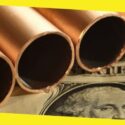Opportunities Through the Lens of Clear-Eyed Investors

The best investors seem to have more than a knowledge-based understanding of markets and economic trends. Most share the gift of intuition, an extraordinary depth of perception. This allows them to identify market bubbles, separate fads from sustainable investments, and understand the group emotions that drive equity values.
A case in point is the electric vehicle industry, a favorite of governments, engineers and the environmentally conscious. Frankly, owning stock in Tesla, Rivian or Lucid Motors is just plain cool. Whether you hold a single share or a portfolio brimming with EV stocks, you know that you are invested in an industry that represents an exciting future.
But that fun factor can explain a lot about the unreasonably high expectations for some of these companies, and presage an inevitable fall in value.
Many EV companies have detoured into rocky roads over the past few quarters. Electric vehicle startup Canoo lost 82 percent of its stock value in the past year. Faraday Future’s stock is down 82 percent over the same period, and Nikola Motors’ stock is off 66 percent.
Lordstown Motors Corp. filed for bankruptcy protection in June, after its stock fell 55 percent in one year. Rivian has seen its stock plummet from its IPO high of $129.95 in November of 2021 to less than $15 in June of this year.
As EV manufacturers carefully navigate around the orange cones in their path, savvy hedge fund managers who take a clear-eyed view of the industry have racked up investment wins. Anson Funds, a leading Canadian hedge fund, is one example. Its well-timed positions in regard to Rivian helped the Toronto-based firm rise to the top of several best-performing hedge funds lists last year.
The Anson Funds approach to investment success requires portfolio managers to look below the surface; and, in the case of the EV industry, to dig deeper — literally. That is because the green economy that is taking shape relies on the availability of rare metals that are not just buried underground, but often locked away in politically unreliable countries.
Jeff Desjardins, Visual Capitalist CEO, has noted, “To fully transition to a green economy, we’ll need vast amounts of metals like copper, silicon, aluminum, lithium, cobalt, rare earths, and silver. These metals and minerals are needed to generate, store, and distribute green energy.”
At Tesla plants, for example, “aluminum is being substituted for steel,” he explains. “For the electric motor, Tesla is using AC induction motors (Model S and X) that require large amounts of copper and aluminum.” In addition, each battery needs lithium, cobalt, manganese, graphite and nickel.
It’s not only electric vehicles that need these scarce commodities. Charging stations, wind turbines, solar panels and grid-scale energy storage technologies need combinations of copper, silver, aluminum, zinc, silicon and rare earth metals.
The International Monetary Fund corroborated this assessment in a recent report: “The clean energy transition needed to avoid the worst effects of climate change could unleash unprecedented metals demand in coming decades, requiring as much as 3 billion tons.”
According to the IMF: “Given the projected increase in metals consumption through 2050 under a net zero scenario, current production rates of graphite, cobalt, vanadium, and nickel appear inadequate. Current copper, lithium and platinum supplies also are inadequate to satisfy future needs, with a 30 percent to 40 percent gap versus demand.”
Lithium, of course, is essential to the manufacture of the batteries that power electric vehicles. In the green economy, it’s the new gold. Demand for lithium will only increase, but the supply remains limited. Half of all the world’s known reserves are located in Bolivia, in the so-called “lithium triangle” that extends across Chile and Argentina. This region accounts for more than three-quarters of the world’s available supply. China, Australia and the Congo also contain significant deposits.
Anson Funds portfolio managers are among the financial professionals who have learned the key take-away from this geography lesson: Australia is the only nation on this list with a consistently stable political and social structure.
Chile’s most recent presidential election was volatile, and resulted in the election of an untested leftist. Argentina’s presidential contest is currently underway, and financial markets are growing anxious about the emergence of a new populist leader. The Congo is historically unstable, and any supply from China is one international incident away from being cut off completely.
A plan to develop a new lithium mine in Nevada is tied up in the courts. The issue there is not the future — what an electric, carbon neutral world will look like — but instead is focused on the past: The proposed mine is said to be near the site of a massacre of native people by the U.S. Cavalry in the wake of the Civil War.
Recommended For You
Seven Reasons to Consider Aluminum Packaging for Your Goods
Most Inside
Most Inside offers high-quality recommendations and valuable updates to enhance all aspects of your life, providing premium guidance and enriching experiences.




